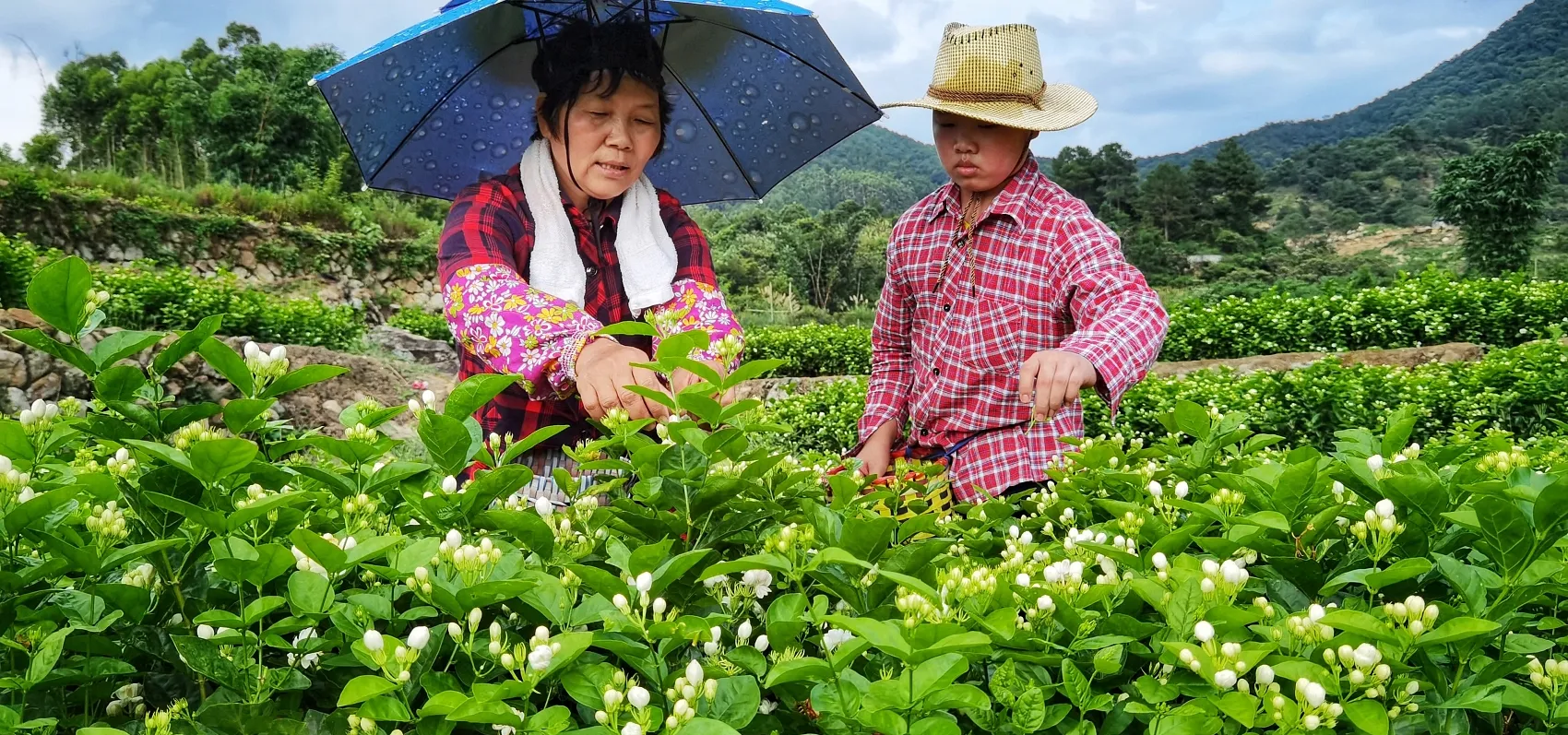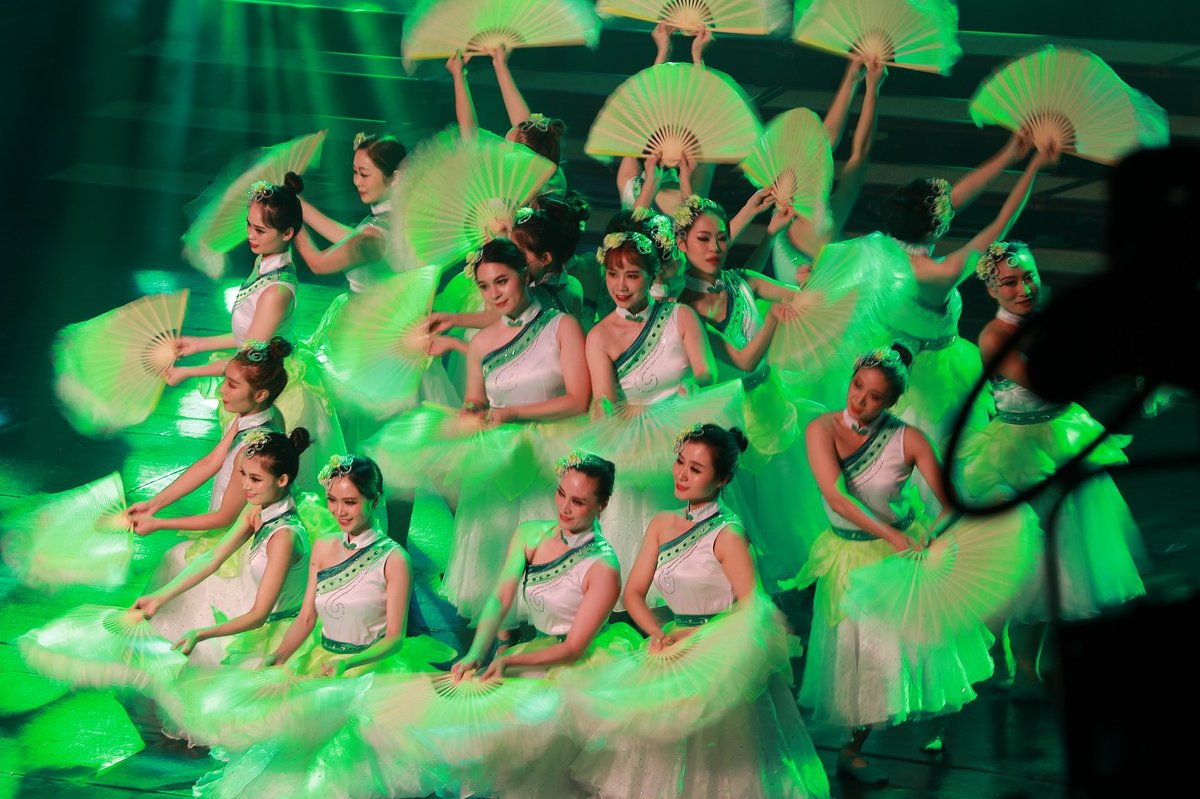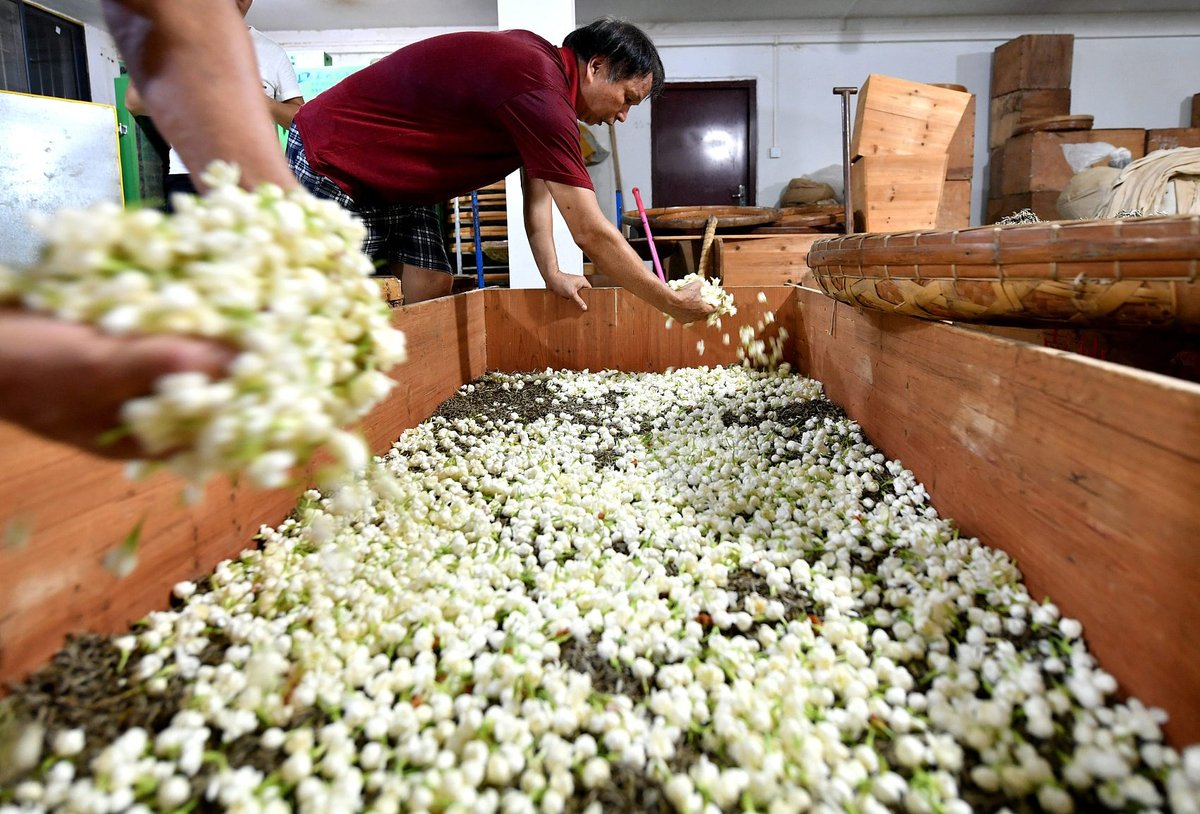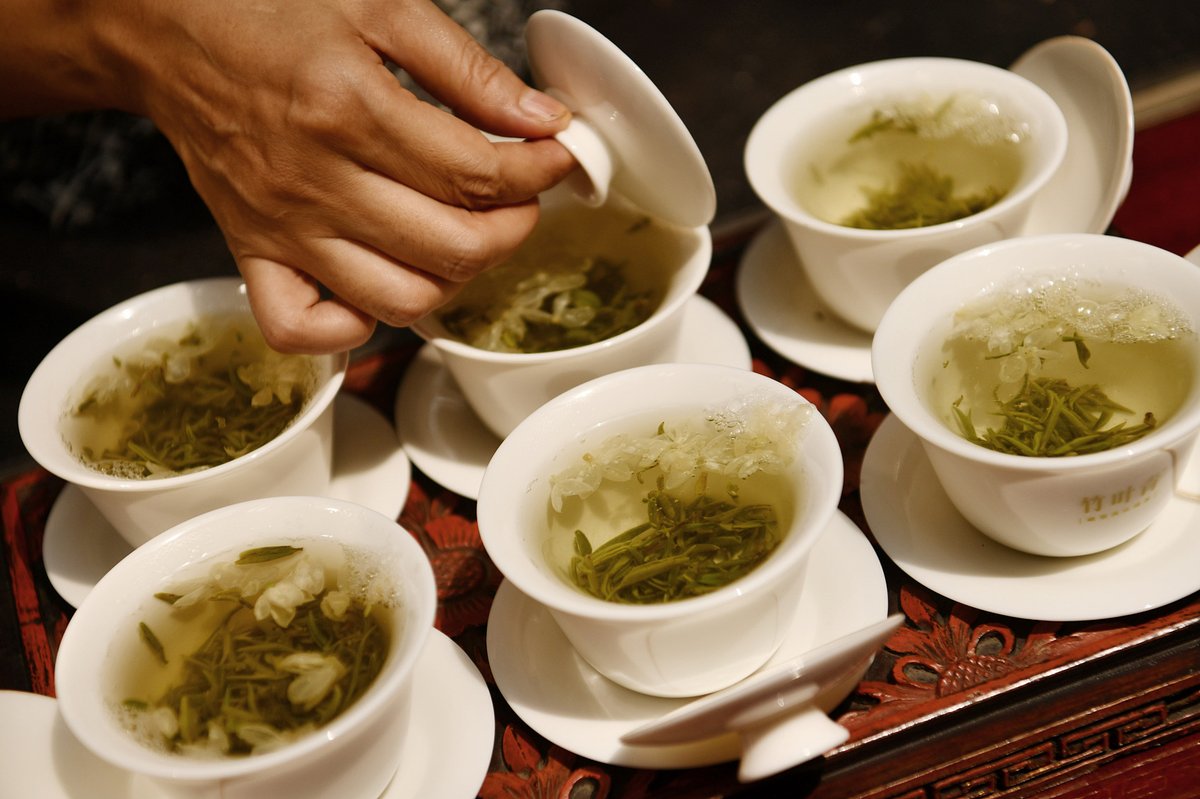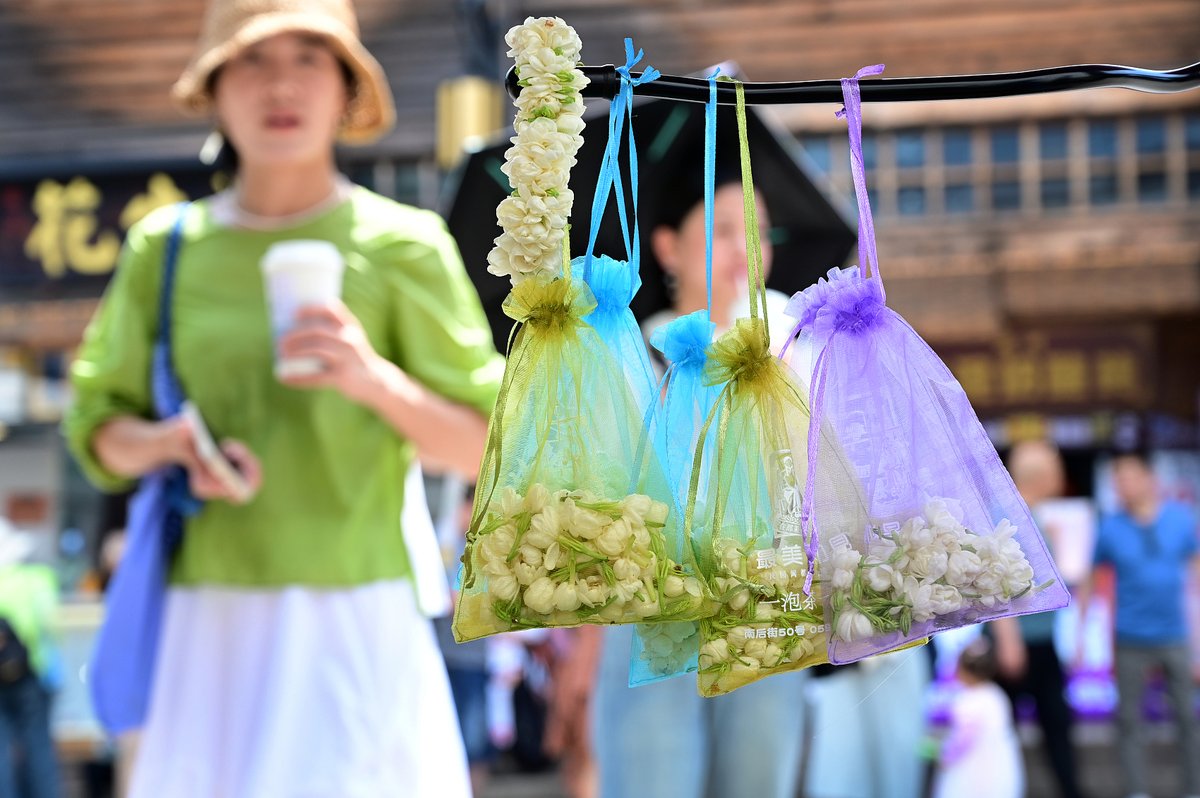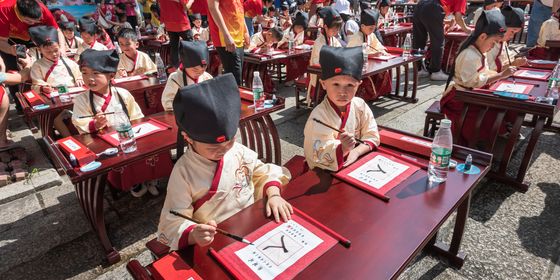Celebrate summer with jasmine tea and discover why this floral-infused brew remains a perennial favorite across generations in China
Sugar-free tea beverages are flying off the shelves in supermarkets and convenience stores in China as young people embrace healthier lifestyles. According to the consumer behavior database NielsenIQ, tea drinks have surged past carbonated drinks in popularity for the first time in 2023. Among them, jasmine tea stands out as a beloved favorite, cherished for its refreshing aroma and numerous health benefits, especially during the hot summer.
Zhang Dacheng, a distributor for Nongfu Spring, one of China’s largest soft beverage companies, told finance media YiMagazine that the company’s bottled jasmine tea became its most sought-after product, experiencing up to eight weeks of stock shortages during Guangzhou’s hottest months.
The enduring popularity of jasmine (or 茉莉花 molihua) can be partly attributed to its deep cultural significance. In Mandarin, jasmine sounds like “no profit (没利)” suggesting that people should not focus too much on fame and fortune. Additionally, its fragrance is believed to purify the mind and elevate emotions. Even to this day, the Ming dynasty (1368 – 1644) folk song “Mo Li Hua (Jasmine Flower),” which praises the purity and elegance of the white flower, is one of the most well-known Mandarin folk songs in China and worldwide. Notably featured in Italian composer Giacomo Puccini’s opera Turandot and the 1937 Academy Award-winning film The Good Earth, the song has since been played at major international events like the Olympics, solidifying the song as a symbol of Chinese culture.
However, despite its deep roots, jasmine is not native to China. Originating from tropical and subtropical regions of Eurasia, Africa, and Australasia within Oceania, the flower’s journey to China remains a subject of debate: The most popular theory suggests it traveled from ancient Rome to India via the Maritime Silk Road. This ancient network of sea routes connecting China and the West was active between the second century BCE and the mid-to-late 19th century, and it was during the Han dynasty (206 BCE – 220 AD) that jasmine, the holy flower of Buddhism, arrived in China when the religion was brought from India.
Read more on traditional food culture in China:
- How a Tiny Flower Becomes the Scent of Autumn in China
- Acquired Tastes: Fishy Grass and Other Chinese Herbs and Spices
- Seven Famous Yunnan Flower Dishes
The earliest record of jasmine in China appears in Journey to Southern Yue (《南越行纪》) by Western Han dynasty (206 BCE – 25 CE) philosopher Lu Jia (陆贾). It stated that while local flowers were not fragrant, jasmine, transplanted from another country, was notably aromatic, indicating that jasmine has been in China for at least 2,000 years.
By the Song dynasty (960 – 1279), Fuzhou city, now the capital of southern China’s Fujian province, was identified as an ideal location for cultivating jasmine. Fuzhou’s warm and humid climate and fertile and permeable soil nourished by the Minjiang River create ideal conditions for growing jasmine. A Song politician Chen Fu (陈傅) documented Fuzhou’s specialties: “There are lychees as fruits and jasmine as flowers, which are not found anywhere else in the world.” During this time, women started to put jasmine in their hair after bathing to infuse it with the flower’s fragrance. The custom of pinning jasmine and other fresh flowers on clothes remained popular in China until the 19th and 20th centuries when modern perfumes became more widely favored. Even today, however, street vendors in some cities still sell these flower buds to visitors.
The mountainous region of Fujian is also ideal for growing tea leaves and boasts a rich tea culture. Locals maximize these natural resources by planting tea trees on the hills and jasmine along the river. Naturally, Fuzhou residents combined jasmine and tea leaves to create floral teas with green or white tea as the base. The resulting flavor is subtly sweet and highly fragrant. Today, most of the jasmine produced in Fuzhou is still used to make jasmine tea.
After tea was introduced to the UK in the 1660s during the Qing dynasty, jasmine tea began to be exported in large quantities to the West, primarily from Fuzhou, as many officials responsible for maritime and foreign affairs were of Fujian origin. Empress Cixi’s love for jasmine flowers further elevated its status, especially in Beijing. She decreed that no one else could wear jasmine flowers in their hair and also made Fuzhou jasmine tea exclusive to the royal family. Its popularity persists in modern China, and it is favored by renowned writers like Lao She and Bing Xin.
In recent years, however, floral-flavored teas, jasmine included, have slipped to the bottom of the list among some tea connoisseurs. They see more value in varieties like Pu’er and Oolong and believe jasmine tea is reserved for children and amateurs. But jasmine’s refreshing taste and health benefits have helped retain its popularity among the masses. According to traditional Chinese medicine, jasmine tea is cool in nature, light in flavor, and believed to clear heat, detoxify, promote diuresis, and calm the nerves, which makes it suitable for spring and summer to dispel coldness and humidity in the body. Ready-to-drink jasmine teas produced by major companies like Nongfu Spring and Master Kong are a childhood favorite for many who grew up in the early 2000s. In 2020, a Shenzhen tea brand, Molly Tea, was founded solely for jasmine-infused beverages, aiming to blend jasmine essence into everyday life. It quickly gained nationwide popularity, attracting young consumers who appreciate the allure of Eastern floral and tea traditions. The brand now has over 600 shops across more than 100 cities in China. If Molly Tea has yet to reach your city, you can still enjoy a variety of jasmine-flavored products at most milk tea shops in China as jasmine tea has become a popular base for many creative offerings.
“Sweet-smelling, beautiful, stems full of buds; Fragrant and white, everyone praises” goes the lyrics of “Mo Li Hua.” Much like this centuries-old folksong, the delicate aroma of the jasmine flower has transcended generations, captivating contemporary audiences with its timeless cultural significance and refreshing taste amid the summer heat.





